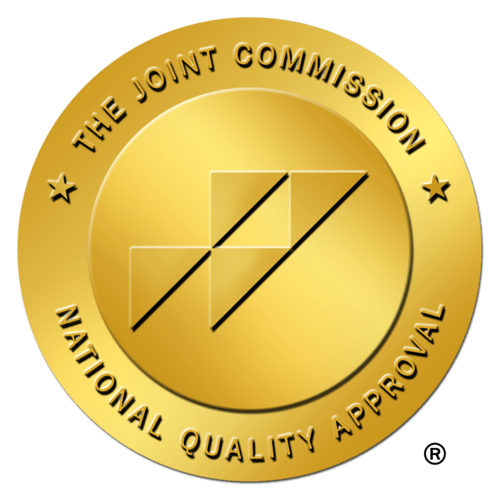
Asthma affects over 25 million people in the United States alone, with millions more impacted worldwide. Proper management of this chronic respiratory condition requires more than medication—it requires education, empowerment, and long-term patient support. That’s where Certified Asthma Educators (AE-C) come in.
Whether you’re a respiratory therapist, nurse, pharmacist, or other licensed healthcare provider, earning your AE-C credential can elevate your career and equip you to make a real difference in patient outcomes. In this comprehensive guide, we’ll walk you through the steps to become a Certified Asthma Educator, explore the benefits, and help you decide if it’s the right path for you.
What is a certified asthma educator (AE-C)?
A Certified Asthma Educator is a healthcare professional who specializes in teaching individuals and families how to manage asthma effectively. The credential is awarded by the National Board of Respiratory Care (NBRC), an independent body that develops and administers the AE-C certification exam.
Certified asthma educators are equipped to provide personalized guidance on:
- Asthma triggers and environmental control
- Medication use, including inhaler technique
- Self-monitoring and symptom tracking
- Emergency action planning
- Behavior change to improve disease management
The AE-C credential signifies expertise in asthma education and a commitment to improving patient quality of life through evidence-based care.
Benefits of becoming a certified asthma educator
Pursuing AE-C certification offers several professional and clinical advantages, including:
1. Enhanced patient outcomes
Research shows that asthma education improves medication adherence, reduces ER visits, and leads to better long-term disease control.
2. Career advancement
The AE-C designation can open doors to roles in specialty clinics, public health, research, and leadership positions that require advanced patient education skills.
3. Professional credibility
Having a nationally recognized certification on your résumé signals your commitment to excellence and lifelong learning.
4. Expanded scope of practice
You’ll be better prepared to lead patient education programs, consult on asthma management plans, and collaborate with multidisciplinary teams.
5. Potential for higher earnings
While not always guaranteed, credentials like AE-C can justify salary increases or support negotiations for new roles.
Who is eligible to take the AE-C exam?
To be eligible for the AE-C exam, you must meet the following criteria:
- Hold a valid, current license or credential in a health-related profession (e.g., RN, RT, PharmD, MD, PA, NP, DO)
- Have at least 1,000 hours of experience in asthma education within the last five years
In some cases, non-licensed professionals may qualify if they hold a relevant credential and meet the work experience requirements. This includes health educators (CHES), social workers, or school nurses who provide asthma education in approved settings.
The NBRC provides a detailed eligibility guide to help applicants determine if they qualify. If your background is less traditional, it’s worth reviewing the eligibility FAQs or contacting the NBRC directly for clarification.
How to prepare for the AE-C certification exam
Preparation is key to passing the AE-C exam on your first try. Here’s how to get ready:
1. Review the candidate handbook
Start by downloading the handbook from the NBRC website. It includes the exam content outline, policies, and sample questions.
2. Understand the exam blueprint
The AE-C exam covers five major domains:
- Asthma pathophysiology and diagnosis
- Patient assessment and monitoring
- Pharmacologic therapies
- Environmental control strategies
- Patient and family education
3. Use reputable study materials
Top-rated study resources include:
- The Asthma Educator's Handbook by Christopher H. Fanta et al.
- The American Lung Association’s Asthma Educator Institute course
- AARC’s AE-C prep courses for respiratory therapists
- Practice question banks and flashcards from sources like ExamEdge and Study.com
4. Create a structured study schedule
Plan to study over 6–12 weeks depending on your baseline knowledge and time availability. Focus on weaker content areas and use active learning strategies like quizzing and case studies.
5. Join study groups or forums
Online communities, such as AE-C Facebook groups or LinkedIn networks, can provide peer support, resource sharing, and tips from those who’ve recently passed the exam.
How to register for the AE-C exam
The AE-C exam is administered by Prometric testing centers across the U.S. Here’s how to register:
- Visit the NBRC website at www.nbrc.org
- Create an account and complete the online application
- Upload any required documents, such as licensure or credentialing proof
- Pay the $295 exam fee
- Receive your Authorization to Test (ATT) and schedule your exam at a Prometric location near you
Prometric offers both in-person and remote (proctored) options in some regions. You’ll have 90 days from the time of approval to take the test.
What's on the AE-C exam?
The AE-C exam consists of 175 multiple-choice questions, with 150 scored and 25 unscored pre-test items. You’ll have 3.5 hours to complete the exam.
Key content areas include:
- Asthma pathophysiology and epidemiology
- Diagnostic and assessment tools (e.g., spirometry, peak flow meters)
- Asthma severity and control classification
- Quick-relief and long-term controller medications
- Environmental triggers (e.g., allergens, smoke, pollution)
- Action plans, patient communication, and motivational interviewing
- Cultural competency and family dynamics in care
The passing score is determined by the NBRC’s psychometric analysis and may vary slightly with each test form. Results are available immediately after completing the exam.
Maintaining and renewing your AE-C certification
AE-C certification is valid for five years. To renew your certification, you have two options:
1. Retake the AE-C exam
You can choose to retake the full exam before your credential expires. This is the default option.
2. Submit continuing education hours
You may also renew through continuing education by completing at least 75 contact hours of relevant CEUs over the five-year certification cycle. The education must align with the NBRC content domains and be approved by recognized CE providers.
Renewal by CE submission requires a processing fee and must be completed before your expiration date to avoid lapse in certification.
Career paths and job settings for AE-C professionals
AE-C professionals work in a wide variety of clinical and community environments, including:
- Hospitals and health systems – Working in pulmonary departments, asthma clinics, or pediatric units
- Outpatient specialty clinics – Allergy, pulmonology, or family practice settings
- Public health organizations – Leading education initiatives in schools or underserved communities
- Home health and telemedicine – Providing remote coaching, monitoring, and education
- Pharmacies – Counseling patients on inhaler use, trigger management, and medication adherence
- School systems – Supporting students and staff in managing asthma effectively
Whether you want to lead a patient education program, design intervention tools, or collaborate with providers to reduce asthma readmissions, the AE-C credential strengthens your resume and your impact.
AE-C vs other respiratory or education credentials
Wondering how AE-C compares to other credentials? Here’s how it fits in:
- RRT or CRT (Respiratory Therapists): AE-C builds on respiratory therapy knowledge by focusing more deeply on patient education and asthma-specific content.
- Certified Pulmonary Function Technologist (CPFT): Focuses on diagnostic testing, while AE-C emphasizes education and disease management.
- CHES (Certified Health Education Specialist): CHES covers a broader range of public health education; AE-C is asthma-specific and more clinically grounded.
AE-C is often held alongside one or more of these credentials to create a well-rounded profile, especially in pediatric or pulmonary-focused roles.
Resources and organizations to support your AE-C journey
These organizations offer tools, courses, and support for AE-C candidates and credentialed professionals:
- National Board of Respiratory Care (NBRC) – www.nbrc.org
The official certification body with exam resources, renewal instructions, and eligibility guidelines. - American Association for Respiratory Care (AARC) – www.aarc.org
Offers AE-C prep courses and CE opportunities for RTs. - American Lung Association (ALA) – www.lung.org
Hosts the Asthma Educator Institute, one of the most popular AE-C prep programs. - Allergy & Asthma Network – www.allergyasthmanetwork.org
Provides patient education tools, advocacy support, and webinar series. - Centers for Disease Control and Prevention (CDC) – www.cdc.gov/asthma
Data-driven reports and educational materials to support asthma educators.
Is Asthma Educator Certification right for you?
Becoming a Certified Asthma Educator is more than a credential—it’s a commitment to improving lives through education, empathy, and clinical excellence. For healthcare professionals who regularly support asthma patients, the AE-C certification offers a rewarding path to deeper impact, enhanced credibility, and long-term career growth.
If you're ready to specialize and lead in asthma care, take the first step today: review the NBRC handbook, explore study options, and start planning your certification timeline. Your patients—and your career—will thank you.





